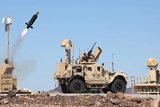German SIGINT effort progresses as Pegasus fleet modification work goes ahead
Bombardier will receive two more jets as part of the German Pegasus surveillance aircraft project. (Photo: Bombardier)
The Pegasus project, headed by Hensoldt, celebrated a recent milestone as the first Global 6000 aircraft arrived for modification at Bombardier’s facility in Kansas, USA.
Bombardier Defense will perform major structural modifications to accommodate the Kalætron Integral SIGINT system developed by Hensoldt. Kalætron system collects and analyses military signals from radar and radio systems.
Following Bombardier’s preparatory work, the system will be integrated at Lufthansa Technik’s special mission aircraft competence centre in Germany.
The first Pegasus is scheduled to enter service in 2026.
The Pegasus (Persistent German Airborne Surveillance System) project aims to fulfil a SIGINT capability which has been missing in the German Armed Forces since the retirement of five Breguet BR1150 Atlantic aircraft in June 2010.
Until 2019, Germany had intended to introduce four SIGINT-configured MQ-4C Tritons to fulfil this capability but decided in favour of procuring crewed aircraft instead, in part due to concerns over airspace use.
Related Programmes in Defence Insight
More from Air Warfare
-
![How do we detect and defeat enemy drones?]()
How do we detect and defeat enemy drones?
Learn about the portfolio of sensors and effectors for the complete counter-UAS mission at Raytheon, an RTX business.
-
![BAE Systems lauds counter-UAS drone progression with live fire trials]()
BAE Systems lauds counter-UAS drone progression with live fire trials
The US-based tests successfully demonstrated the first live trial of a precision guided missile from a modified TRV-150 drone which destroyed both aerial and ground targets.
-
![Kratos Defense makes European CCA push with Airbus partnership]()
Kratos Defense makes European CCA push with Airbus partnership
Kratos’ XQ-58A Valkyrie will be equipped with an Airbus-made mission system to be offered as a ‘European’ collaborative combat aircraft option to the German Air Force.
-
![Anduril’s Barracuda-100M completes latest successful test flights]()
Anduril’s Barracuda-100M completes latest successful test flights
The munitions variant of the Barrauda-100 autonomous air vehicle is being tested for the US Army’s High-Speed Manoeuvrable Missile (HSMM) testbed programme, with further flight tests expected in 2026.






















